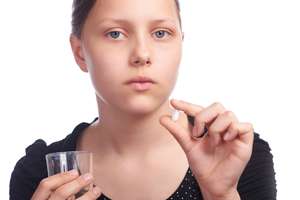Adolescents around the world are frequently using over-the-counter and prescription medications without a doctor's order, a risky practice that can lead to overuse and abuse and is often continued into adulthood, reveals a new review in the Journal of Adolescent Health.
"Self-medication" is influenced by many factors as adolescents are highly affected by their surrounding environment, explained lead author Syed Shehnaz, M.D. of Gulf Medical University in the United Arab Emirates.
"Being keen observers and having spent good amount of time with the family, [adolescents] often have a tendency to adopt the habits of their parents and family members, especially self-medication behavior," said Shehnaz. "Parents are generally the first to be approached for any health complaint and adolescents seek their help and guidance."
Peer influence also plays an important role. Selling, trading, and giving away controlled medications and self-medicating without adult guidance reflect the impact of friends, Shehnaz added.
The review illustrates the global scope of the problem by including 163 studies from the United States, Canada, Saudi Arabia, and Europe. More than 3.5 million adolescents (age 13–18) were questioned about whether they have ever taken a drug not prescribed to them.
The prevalence of self-medication in the studies ranged from 2 percent to 92 percent, with some of the highest use in Germany, the U.S., India, and Kuwait. Teens most often self-medicated with OTC analgesics (painkillers), vitamins and cold and cough medication and prescription antibiotics and opioids. Studies in the review also found that teens lacked knowledge about proper use of medications, despite rating their own knowledge as satisfactory.
A study of U.S. teens found 22 percent overmedicated with painkillers and 14 percent did not inform their parents about their use. The prevalence of self-medication was higher in females in most countries. Around 14 to 28 percent of teens gave away, loaned or sold their prescription medication, particularly pain killers, stimulants and sleep medication.
"The study's findings are consistent with what we at the Partnership for Drug-Free Kids know about teen misuse and abuse of prescription and over-the-counter medication: that the behavior is prevalent and that self-medication, as opposed to 'recreation', is a major motivation to abuse," said Sean Clarkin, the group's director of programs.
The Partnership's "Medicine Abuse Project," which brings together public and private sector partners, promotes better understanding of the risks of medicine abuse and more vigilant safeguarding of home supplies of medication, Clarkin explained.
"The good news is that federal data (from the National Survey on Drug Use and Health) show that initiation of prescription drug abuse is now actually declining among adolescents—even as it continues to grow among older demographics."
More information: Shehnaz SI, Agarwal AK, Khan N. "A systematic review of self-medication practices among adolescents." Journal of Adolescent Health. 2014. DOI: dx.doi.org/10.1016/j.jadohealth.2014.07.001
Journal information: Journal of Adolescent Health
Provided by Health Behavior News Service























